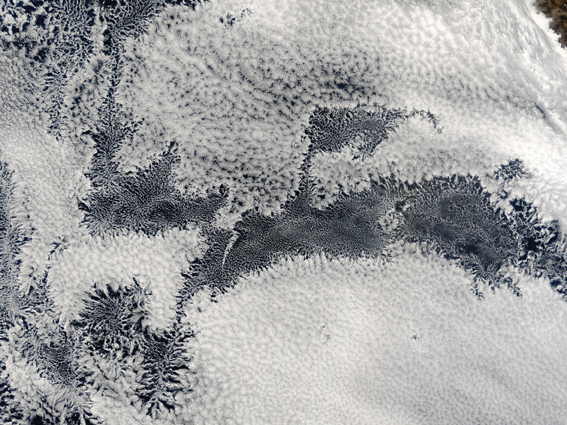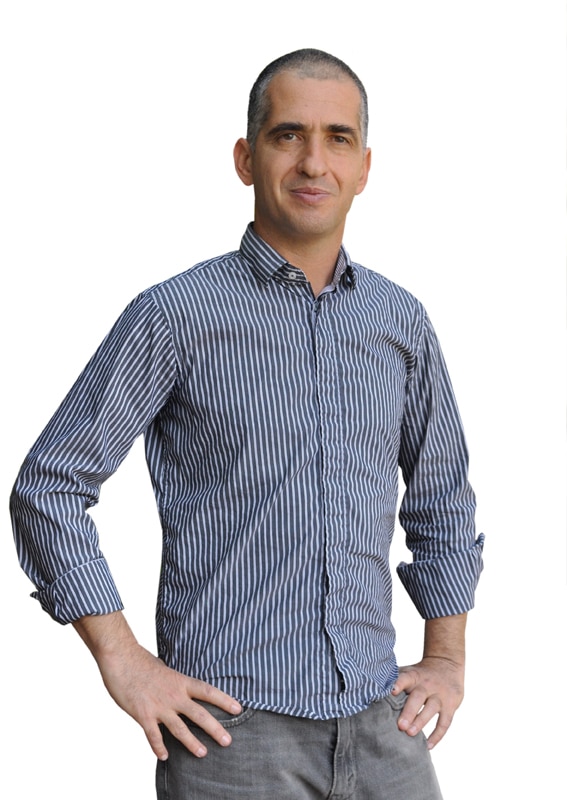are often formed near the western coasts of the continents in the subtropical climatic zones, and they extend above the oceans over areas of up to thousands of square kilometers

The low rain clouds, known as "maritime stratocumulus", are often formed near the western coasts of the continents in the subtropical climatic belts, and they extend above the oceans over areas of up to thousands of square kilometers.
These clouds form incredibly organized systems. Satellite images of them reveal a fascinating pattern: almost perfect grids of hexagonal, closed cloud cells, like white, soft beehives. Other regions contain open cells, where the clouds are concentrated around the cell boundaries. Such cloud systems may persist for hours.
Scientists from the Weizmann Institute of Science, together with their research partners from the US Atmospheric and Oceanic Administration, NOAA, from Peking University and PNNL laboratories in Washington, shed new light on the mystery of the formation of these cloud cells, revealing some of the basic principles that control them. The findings emerging from this study may provide new insights into various climatic processes. It turns out that the bright white covering of the clouds in the closed cells reflects the sun's radiation back into space, thus contributing to the cooling of the climate on Earth. In contrast, the open cells reflect much less radiation.
"The formation process of the cloud cells is somewhat similar to boiling water," says Dr. Ilan Koren, from the Department of Environmental Sciences and Energy Research in the Faculty of Chemistry at the Weizmann Institute of Science. "The large difference in temperature, between the base of the heated kettle and the relatively cool surface of the water, causes constant movement - a kind of vertical agitation of water columns. Warm water rises to the surface, cools, sinks to the bottom, heats up again, and God forbid, in a process called Rayleigh-Bernard convection. A similar process causes the formation of cloud cells."
Dr. Korn and Dr. Graham Feingold, of the NOAA Laboratory in Colorado, studied the role of rain in open marine systems of stratocumulus clouds. They checked, using satellite photos, how these systems progress and develop over hours and days. Later, they created mathematical models that allowed them to reveal the organization principles of the cloud systems. This is how they managed to discover a feedback mechanism - in which the rain plays a central role - which causes the cells to oscillate between open states.

The model starts with a situation where clouds are formed at the boundaries (the "walls") of the open cells, as a result of the sea water vapor rising in the atmosphere. After a relatively short time, this water turns into rain, which creates the opposite dynamic to the one that created the clouds in the beginning. In the initial stages of cloud formation, the energy released as the rising vapor condenses increases the upward flow of air. But then, as the rain begins to fall and evaporate below the cloud base, the cooling effect increases. The cooling causes the air to sink - something that results in the flow of the "parent cloud" downwards (downdraft). The descending air forces the air around it to rise, and this is how the next generation of clouds is formed, at the site where the empty center of the "parent" cloud cell was before.
Therefore, all the cells are connected to each other, and in fact, all the oscillations of the cells are also timed. A single cell cannot act alone: it must function as part of a "network". In some ways it depends on the cooperation of its neighbors. Dr. Koren: "Like the sound made by many pairs of hands clapping in rhythm, or the timed flashes of fireflies on a summer night, this communication results in the production of a self-organizing system that oscillates consistently." Although the individual cells clear or fill with clouds intermittently, the entire system remains for days, so scientists speak of "dynamic stability" in the cloud cover.
In a previous study, Dr. Koren studied the role of tiny particles - natural and artificial - in the atmosphere, in the production of clouds and precipitation.
Since these particles, called aerosols, affect the size of the water droplets that form in the cloud (something that affects rainfall), he believes that the dynamics of marine stratocumulus systems may also be affected by human activity. If there is truth in this concept, then it is possible that our influence on the energy balance of the climate system is greater than is currently estimated.
